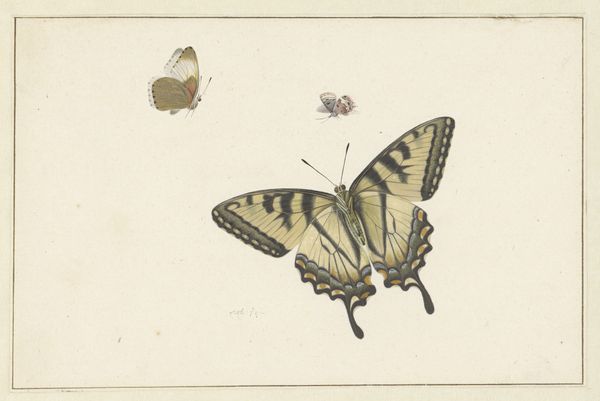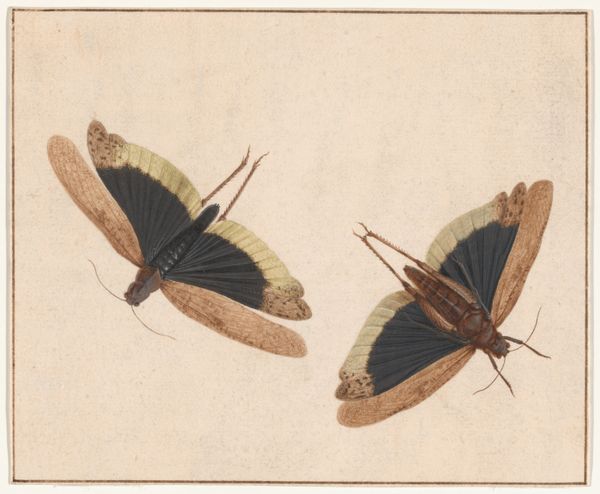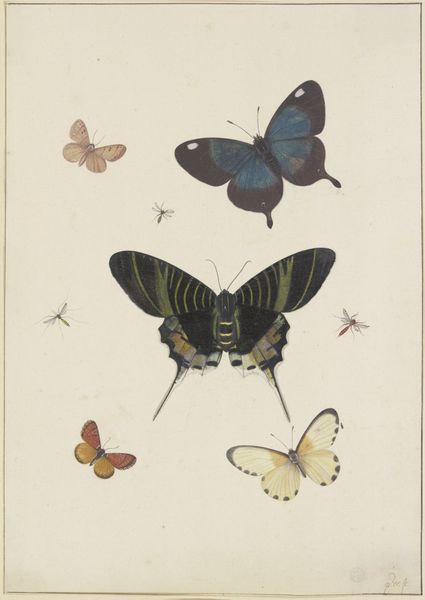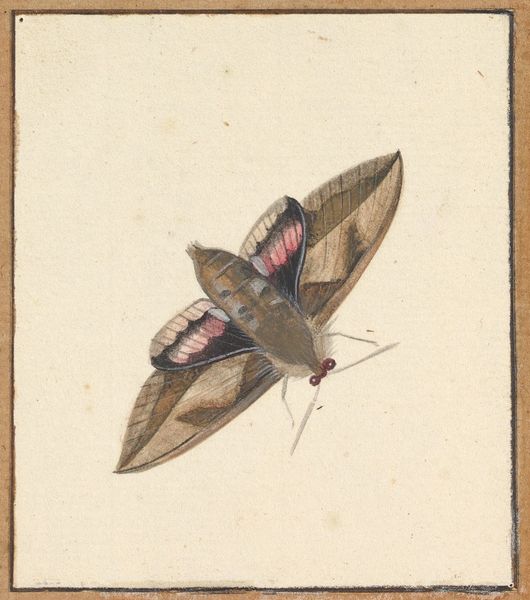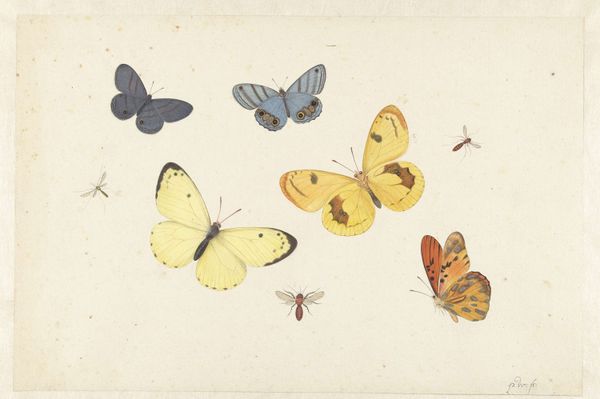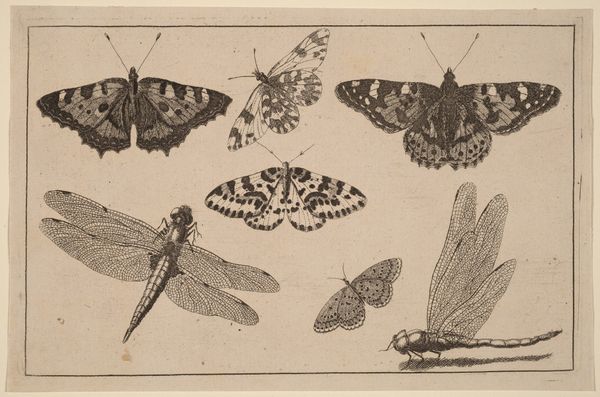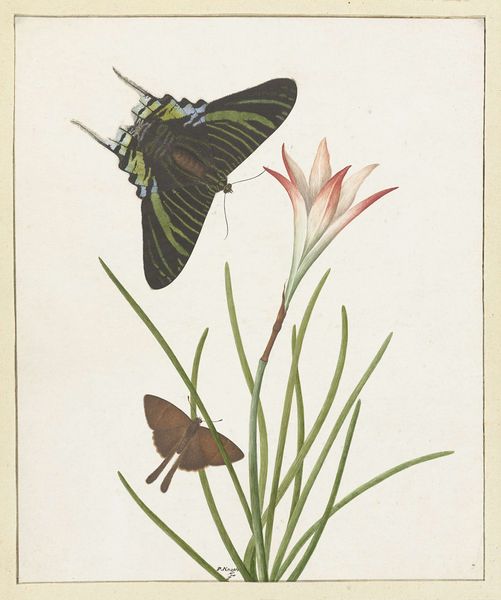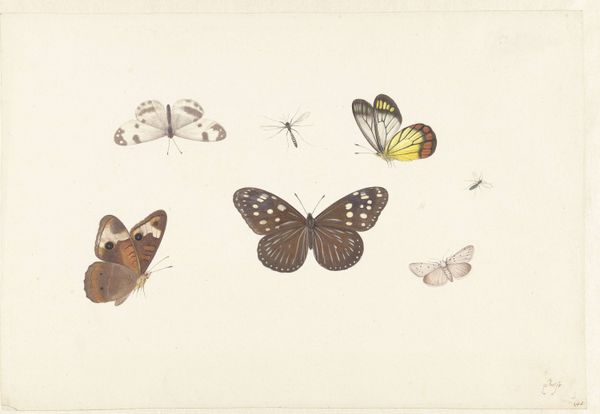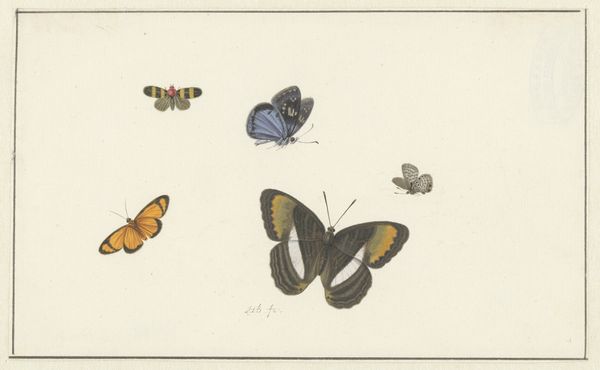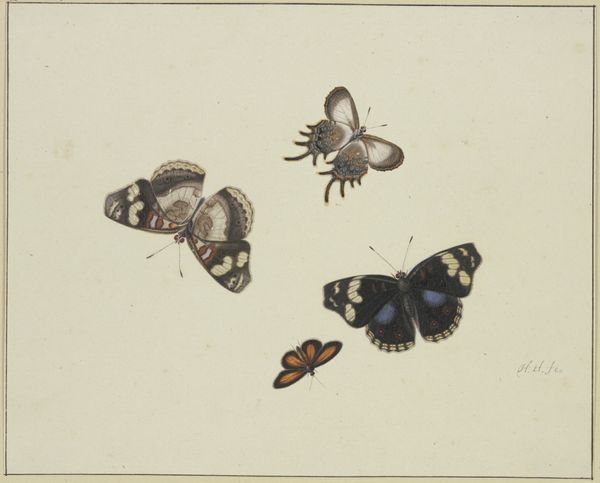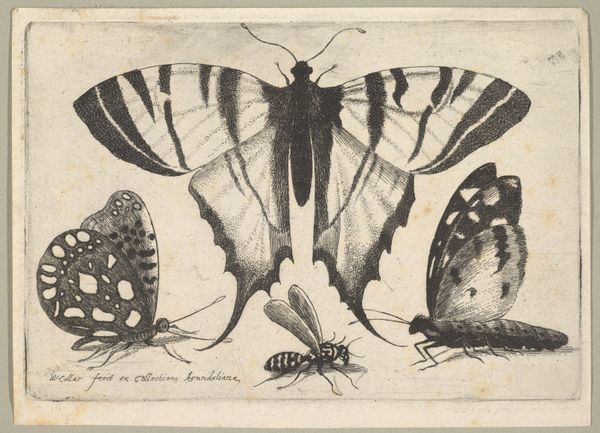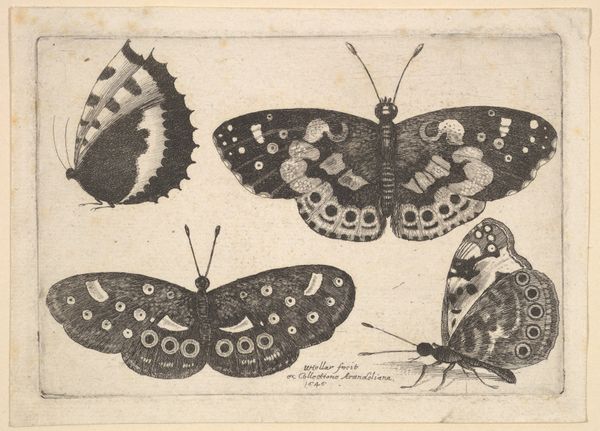
#
vegetal
#
quirky illustration
#
childish illustration
#
old engraving style
#
personal sketchbook
#
sketchbook drawing
#
watercolour illustration
#
cartoon carciture
#
sketchbook art
#
botanical art
Dimensions: height 201 mm, width 262 mm
Copyright: Rijks Museum: Open Domain
Curator: Ah, the whimsical dance of nature immortalized! Before us is "Drie vlinders en een wesp of vlieg," dating approximately from 1677 to 1726, attributed to Herman Henstenburgh. Editor: It feels like a snapshot from a dream – fragile, almost childlike. The colours are so gentle, barely there, like they might fade if you look too hard. Curator: Note the materiality; the delicate application of watercolour suggesting the very textures of insect wings. I wonder about the specific pigments Henstenburgh employed. The labour involved in grinding those materials, the source, would indicate his standing and artistic practice. Editor: There's something heartbreaking about how fleeting it all feels. Those delicate wings look so fragile. Makes you think about the impermanence of beauty, doesn't it? Are these meant to be specimens, or more of a reverie? Curator: Perhaps a touch of both? Certainly, the detail hints at scientific observation, that late 17th century curiosity. The means by which specimens were traded, observed and the knowledge then shared across scientific circles, and how this in turn filtered through to an artist like Henstenburgh is an area for study. The presence of this "wesp of vlieg" seems a deliberate commentary on categorisation of specimens. Editor: True, though for me, it’s that single wasp disrupts the serene loveliness. A tiny troublemaker gatecrashing the party! A touch of realism, but not scientific illustration necessarily. It all plays so gently. A perfect snapshot of a fleeting encounter! Curator: But is the aesthetic intent masking social messaging? In reality, of course, access to pigments like the blues we can observe was heavily tied into trade relationships across countries; we could spend longer looking at just the manufacturing element… Editor: Always with the receipts! (Laughs). But in all seriousness, the artwork stays with you – these aren't specimens. These butterflies are alive in the artist's memory, more vivid than in some stuffy display case. Curator: I concur on its staying power and wonder at what new levels of social contextualization might become apparent. Editor: I agree, there’s real emotional truth that goes beyond a study of manufacture.
Comments
No comments
Be the first to comment and join the conversation on the ultimate creative platform.
